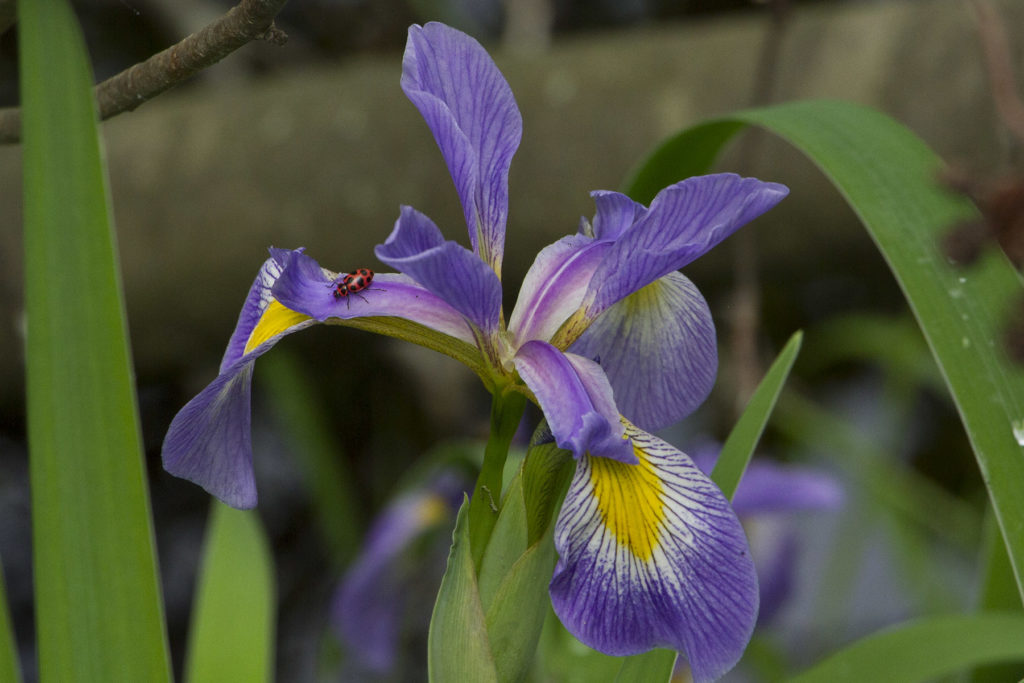Written by Nancy Nabak, Communication Coordinator
Language is fascinating, and makes the world attached to it, even more so. Words, root-words and origins… it’s all part of a  cool literary maze that helps us understand the world around us. For example, the Greek word “iris” means rainbow. The plant we now call iris was named after the goddess ‘Iris’ because of its beauty and because of the varied colors in the flowers. In Greek mythology, Iris was the messenger who traveled on the rainbow between the lands of humans and gods.
cool literary maze that helps us understand the world around us. For example, the Greek word “iris” means rainbow. The plant we now call iris was named after the goddess ‘Iris’ because of its beauty and because of the varied colors in the flowers. In Greek mythology, Iris was the messenger who traveled on the rainbow between the lands of humans and gods.
At Woodland Dunes, we’ve been blessed by a visit from this rainbow goddess. We have a very beautiful native blue flag iris species on our preserve. In fact, it’s one of our Executive Director’s favorite native plants. You can find them along our Cattail Trail boardwalk; otherwise, you may see them in the wild growing throughout wetlands and along shorelines.
Nerd alert facts: the iris is a clump-forming plant with bluish-green, sword-shaped leaves. Its stalks bear three to five violet-blue flowers with a purple veining and inner yellow and white patch. The showy flowers span up to 4 inches in diameter.
Now here’s the neat part for you flower garden lovers. Although it’s a wetland species found in the wild, blue flag iris can thrive in wet areas of your property. Plant it in your rain garden as a natural way to soak up water in a low-lying area, or to add interest along a pond or water feature. Most animals, such as deer who are known for eating flower gardens, tend to avoid it because it’s moderately toxic. Another added bonus is that this iris, which is a little more delicate and smaller than the non-native variety, will attract pollinators to your garden – including hummingbirds. Tip: the blue flag likes rich soil, so add some compost around it each spring to provide nutrition. (Compost is ideal because it’s organic and basically free fertilizer from your kitchen.)
There are only three species of iris that are native to Wisconsin – a northern and southern blue flag, the southern species is shown here, and the dwarf lake iris. Unfortunately, this tiny version of an iris, only 2-3 inches tall, is now federally threatened. It can be found nearby in Door County along the Lake Michigan lakeshore, often under white cedar.
I’m glad for visits from this rainbow goddess. They make my spring happier and my world so much more colorful. If she hasn’t visited you personally yet, take a hike or a walk and go find her!
Photo: southern blue flag iris with a pink-spotted ladybug taken by Nancy Nabak
